4E Home » Publications » Product Energy Efficiency Trends » 4E PEET Status of Television and Displays Regulations 2022
This latest PEET report summarises the status of energy efficiency policy measures for televisions and electronic displays within 4E economies.
Televisions have been a focus for energy efficiency standards and labelling (EES&L) programmes for many years. However, the rapid development in television and electronic display technologies and markets over recent years has blurred the distinction between traditional televisions and other display devices. At the same time, digital displays for advertising and signage of all sizes are becoming ubiquitous. How energy efficiency policies continue to evolve in order to meet these challenges is the subject of workshops, papers and discussions held between 4E Members, which are summarised here.
This summary condenses many highly technical regulatory documents. However, to gain a thorough understanding, it should not replace consideration of these regulations.
This report describes the main types of electronic displays and explains the coverage of EES&L programmes by display type within 4E economies. It concludes with a brief summary of the major trends and opportunities for the regulation of electronic display technologies.
In this report, we focus on the following groups of display types that are the most prevalent within 4E economies.
for display of AV signal
for close and single person viewing connected to a computer
for public and/or non-focused viewing, often long range
for specific industry/professional applications
where the display is integral to the primary function of a product but itself the primary function, such as smartphones, all-in-one desktop computers and conference calling
Within these groups there are a range of subgroups.
The technical differences between displays can be explained by the following factors:
› Screen size
› Sustained screen brightness
› Screen technology
› Image quality
› Lifetime
These factors effect energy consumption to a different extent. For example, energy consumption increases in proportion to screen area and is even more sensitive to screen brightness. Screen technology and pixel density tend to play a less important role. Overall, the growth in the size of displays has had the major influence on the energy consumption of display devices and this, together the increase in screen resolution, has eroded a major share of energy efficiency improvements.
A glossary is provided at the end of this report to explain the terminology used.
Table 1 shows the coverage of MEPS, mandatory labelling and the ENERGY STAR voluntary label2 for the major display types in 4E economies.
Although the total energy consumption by motors and its distribution across the various categories differs in each economy, the scope of regulations is a key factor influencing their impacts. In the following tables, countries with aligned regulations are grouped by colour coding.
Within these major categories, there are large number of display sub-categories which may or may not be defined and within the scope of regulations or programme requirements. This information is summarized in Table 2.
Notes
✔︎ = defined within regulation and in scope of regulation
✖︎ = defined within regulation but not in scope of regulation
ND = not defined and not in scope
The most common screen sizes, technologies and resolutions currently found in the market within the scope of EES&L programmes in 4E economies, are shown in Table 3. However, differences in scope centre around the treatment of new and emerging technologies, particularly MicroLED, OLED and 8k televisions. Opinions differ on whether the exclusion of new technologies from the scope will enable them to reach higher efficiency levels as they mature; or whether their market share will grow sufficiently quickly to cause a growth in overall energy consumption unless they are covered by EES&L programmes. The latter view also depends on how confident EES&L programmes are that they can monitor the market and update requirements in response within a reasonable time period.
Notes
✔︎ = defined within regulation and in scope of regulation
✖︎ = defined within regulation but not in scope of regulation
ND = not defined and not in scope
The test for television on-mode power is the same across all 4E economies, with IEC 62087-3:2015 being the most widely used method of test3.
Both ENERGY STAR and the new EU regulation use an energy efficiency metric to reflect the non-linear relationship between screen area and power consumption.
The Top Runner efficiency metric in Japan has also been substantially simplified, with the number of functional allowances reduced to nine. The core features that are covered in the energy efficiency metrics for televisions are summarised in Table 5.
Notes
Screen sizes and sustained brightness levels are increasing across all consumer devices, as are screen resolutions for mid to high-end products.
These factors are influencing the power demand of display devices.
At the same time, we are seeing the functionality of the most common types of display device converge, and this is increasingly reflected in regulations with a broader coverage, such as the European regulation. This approach is easier for industry to understand, reduces regulatory burden and eliminates loopholes and inconsistencies.
The rapid growth of signage displays is an important trend. These products differ from other displays since they are active for longer periods of the day and a significant proportion are purchased by institutional buyers. As a result, we note that ABC requirements are crucial to reducing energy consumption and the role of labelling programmes to assist the procurement of more energy efficient signage. Labelling may also be usefully applied to more niche products, such as high-end graphical displays and industrial displays.
The physical labelling of TVs and other displays has caused problems over the years, and many EES&L programmes now allow for the digital display of the label on the screen as an overlay in ‘shop’ mode.
Electronic displays are becoming integrated into other products such as whitegoods where they are replacing buttons. Since these cannot readily be tested alone, some regulators are considering how best to include these within specific requirements for whitegoods and other relevant products.
Some regulations now include measures to facilitate recycling, repairability and end-of use disposal for display technologies as part of efforts to support the circular economy. While these topics are not always within the current legislative mandate of energy efficiency agencies, they are sufficiently important that governments need to consider whether they are best addressed within energy efficiency regulation or elsewhere.
ABC: Automatic brightness control
AV: Audio-visual
EPG: Electronic programme guide
HD: High definition
HDR: High dynamic range
IEA: International Energy Agency
IEC: International Electrotechnical Commission
ISO: International Organization for Standardization
MEPS: Minimum energy performance standard
NA: Not available (or applicable)
PEET: Product Energy Efficiency Trends project under the 4E
TCP Rating: The set of rated values and operating conditions
Rated value: A quantity value assigned, generally by a manufacturer, for a specified operating condition
TR: Top Runner Programme in Japan
UEC: Unit energy consumption
VOIP: Voice over Internet Protocol
The Technology Collaboration Programme on Energy Efficient End-Use Equipment (4E TCP) has made its best endeavours to ensure the accuracy and reliability of the data used herein, however makes no warranties as to the accuracy of data herein nor accepts any liability for any action taken or decision made based on the contents of this report.
Views, findings and publications of the 4E TCP do not necessarily represent the views or policies of the IEA Secretariat or its individual member countries.
























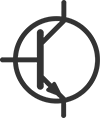


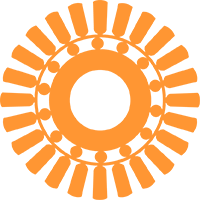

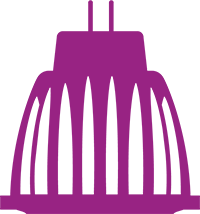
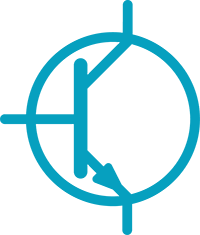
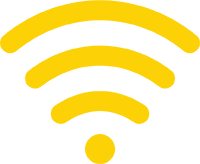
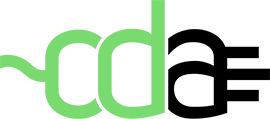
Since 2008, the Energy Efficient End-Use Equipment TCP (4E) has tracked the efficiency trends of major globally traded products and corresponding energy efficiency regulations.
This enables 4E Members to identify whether their current policies are being effective, how these policies and the performance of products compares across different regions and opportunities for closer alignment.
This process forms a multi-lateral exchange between regulators within 4E Member countries that accelerates the development of product policies and increases the level of energy savings, while also reducing regulatory and cost burdens on industry and consumers.
Joint analysis by the IEA and 4E into the global impacts of energy efficiency regulations¹ has shown that:
The longest running energy efficiency (EES&L) programmes are estimated to deliver annual reductions of around 15% of total current electricity consumption.
In the nine countries/regions for which data were available, these programmes reduced annual electricity consumption by a total of around 1,580 terawatt-hours in 2018 – similar to the total electricity generation of wind and solar energy in those countries.
On average, the energy efficiency of new major appliances in countries with EES&L programmes has increased two to three times the underlying rate of technology improvement.
The average purchase price of appliances covered by EES&L programmes declined at a rate of 2-3% per year.
Within 4E economies, energy efficiency regulations, taken to include minimum energy performance standards (MEPS), mandatory and voluntary energy labelling in this report, are a key driver for product efficiency.
Core elements of these regulations include:
Since 2020, the 4E Product Energy Efficiency Trends (PEET) project has been monitoring the status of these elements across regulations for major appliance and equipment types across 4E Member countries.
1 IEA 4E TCP (2021), Achievements of Energy Efficiency Appliance and Equipment Standards and Labelling Programmes, IEA, Paris (2021). https://www.iea.org/reports/achievements-of-energy-efficiency-appliance-and-equipment-standards-and-labelling-programmes